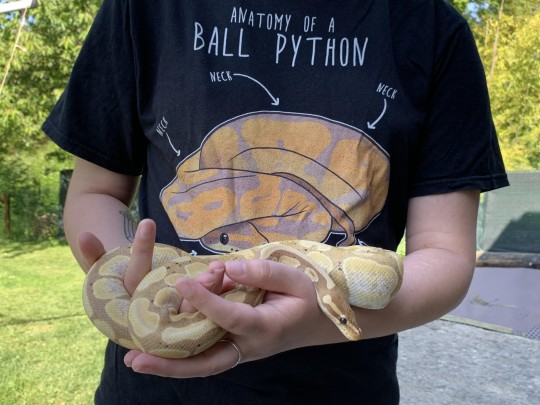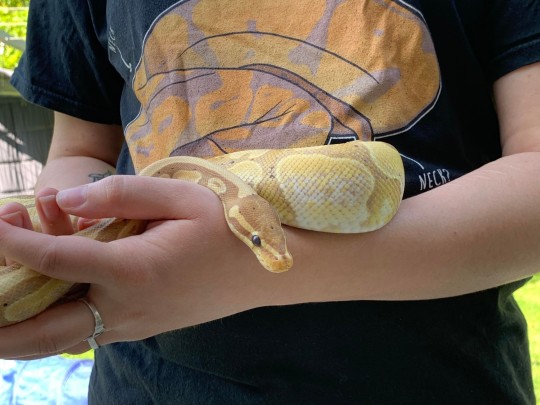#rheia
Text
The lazy girl got some exercise!


773 notes
·
View notes
Text








Your shallow heart doesn't soothe me.
Your false love won't break me.
Don't make me pity you.
#oathbreaker#rheia#caro thange#10:56#second son of r#post hardcore#no way it's been almost a decade since they released this song
23 notes
·
View notes
Audio
Oathbreaker - Second Son of R.
64 notes
·
View notes
Text

rhea gives kronos a bomb baby instead of a stone baby (x)
#july 10 2022#had this in my head for soo long#kronos#cronus#cronos#rhea#rheia#greek titans#greek gods#greek mythology#mythology#my art#mythology art#mythology memes#mythology comics#comic#comics
182 notes
·
View notes
Text
“When the sixth [child] is about to arrive, Rheia appeals to Gaia and Ouranos — who seem now on more amiable terms with each other— for a plan to save him. Following their counsel, she goes to Lyktos on Krete to deliver Zeus, and hands him over to Gaia to rear, while she herself gives Kronos a stone wrapped in swaddling clothes to swallow (Th 463–91). Hesiod adds to this account only that Zeus grew swiftly, but the Eumolpia of "Mousaios" says that he was given to Themis, his aunt, who in turn gave him to Amaltheia, who had a goat nurse him (2B8, apud Katast 13). The account of Ps-Eratosthenes from which this last information is drawn goes on to claim that the goat in question was a child of Helios, with an appearance much feared by the Titans, who requested Gaia to hide her in a cave on Krete. Gaia did so, but also gave her into Amaltheia's safekeeping. Subsequently, in this same account, Zeus is advised that the skin of that goat will protect him in his battle with the Titans, being invulnerable and much feared by them (it has as well a Gorgoneion on its back). Our epitome of the Katasterismoi goes no further than this, but Hyginus (Astr 2.13.4) provides the clearly intended conclusion that this skin is the aigis, and both Hyginus and the Germanicus scholia make it the source of Zeus' epithet aigiochos.
Kallimachos (Hymn 1.47–48) seems the first to assign the name "Amaltheia" to the goat itself; so too Eb Iliad 15.229, which offers much the same information as Ps-Eratosthenes, with the addition that Themis was the source of the advice to use the skin of the goat as protection. Ovid (like most other authors) returns us to the idea that Amaltheia was the owner of the goat; he adds, however, that the goat broke one of her horns against a tree, and that Amaltheia carried the horn, filled with fruits, to the child Zeus (Fasti 5.111-28). This seems the earliest preserved source we have to relate this origin of the horn of plenty, but already in the Archaic period Anakreon has referred to "the horn of Amaltheia" as something highly desirable (361 PMG; likewise Phokylides (fr 7 Diehl]), and Pherekydes says that it had the power to furnish whatever food and drink one might desire (3F42). ...
Returning to the matter of Zeus' infancy, we find in the Epimenidean Theogony that the god turns himself into a snake and his nurses into bears to deceive Kronos, and is nursed together with Aigikeros, who aids him against the Titans (3B23, 24). Ps-Eratosthenes, our source for the latter point, adds that this Aigikeros was sprung from Aigipan with Aix (or "the goat") as mother, and had horns and the tail of a fish, the latter appropriately since he used a conch shell to frighten the Titans (Katast 27). He was, of course, made into a constellation for his services, Aigikeros to the Greeks, Capricornus to the Romans (Astr 2.28).
Far better known than this figure, however, and probably much more crucial to Zeus' safety, are the Kouretes, the attendants of his mother who supposedly clashed their weapons to drown out his cries. If Korinna could be dated to the Archaic period, she would constitute valuableearly evidence for their existence, for she says that they hid the god from Kronos (654 PMG). Otherwise we have nothing at all until the poem of“ Epimenides on the birth of the Kouretes and Korybantes (a poem that may have prefaced the Epimenidean Theogony), and nothing of any substance until Euripides. This last poet's Kretes links the Kouretes with Idaian Zeus, Zagreus, and the "mountain mother" (fr 472 N2) while Bakchai 120–34 may allude to their protective role. For the concrete action of concealing Zeus' infant cries by the clashing noise of their weapons, however, our first source is again Kallimachos (Hymn 1.51–53). ... Both Kallimachos (Hymn 1.46) and Apollonios (3.133) speak too of a nurse Adrasteia (another name for Nemesis?), and Apollodoros adds to her Ida, both as daughters of Melisseus (ApB 1.1.6-7; see Appendix A for possible Orphic sources). In Hyginus, the account of the noisemaking of Kouretes or Korybantes is prefaced by a story in which Kronos has cast Poseidon into the sea and Hades down to the Underworld, rather than swallowing them; Hera (also not swallowed) then asks her mother to give her the child Zeus when he is born, and Rheia substitutes the stone for Kronos to swallow (Fab 139). Kronos soon discovers the trick but cannot find the child, suspended as he is in a cradle between sky, earth, and sea by Amaltheia.””
- Early Greek Myth: A Guide to Literary and Artistic Sources by Timothy Gantz
7 notes
·
View notes
Photo

Rheia Cruise Visit
Rheia is always amused by the little people. She loves watching them at least until they notice the half mile Floatzel turning their sky Orange. It's why she loves cruise ships so much. It's a lot easier to 'hide' in the water until she just can't hide herself anymore...
Posted using PostyBirb
6 notes
·
View notes
Text

Oathbreaker - Rheia (2016)
2 notes
·
View notes
Photo

4 notes
·
View notes
Video
youtube
Oathbreaker - Second Son of R.
The tail end of this song starting from around 5:13 reminds me heavily of Departure from Kistvaen (one of my favorite tracks in existence). It's been quite a while since I've listened to Oathbreaker, so revisiting their stuff has been a pleasure.
2 notes
·
View notes
Text
Oathbreaker "10:56" / "Second Son of R." (Official Video)
youtube
0 notes
Text
hand out your troubles, give me your pain
i'll plant them next to the thorns in my veins
Oathbreaker // Stay Here / Accroche-Moi // Rheia
#oathbreaker#stay here/accroche-moi#rheia#album#2016#tie your limbs to my crippled life#hang on i'll carry you around
0 notes
Text


Happy birthday to this literal ball of sunshine!! She turned 4 years old yesterday 🥺 she used to be so tiny, I didn't realize how big she got until I put her right next to her very first hide.
78 notes
·
View notes
Photo






.
.
.
.
life
protects all sweetness with thorns
why should any sweetness stay unprotected ?
only strong bees dance with the flowers which bloom on mountains
·
·
.
.
.
0 notes
Text
youtube
don't make me pity you, don't make me pity you in the end
0 notes
Photo

Reshelled my Urban into a Minifee Rheia boy. *luv!*
0 notes
Text
"As for Rheia, she appears subsequently in the Homeric Hymns at Leto's delivery of Apollo, and as Zeus' messenger to announce the settlement regarding Persephone to Demeter (HAP 93; HDem 441–43), while in Bakchylides she is the one to bring Pelops back to life (fr 42 SM). Her identification with Kybele must be subsequent to the time of that divinity's entry into the Greek world. As far as literature is concerned, the name "Kybele” first appears in Aristophanes ' Omithes (876–77), where she is, like Sabaizos, of Phrygian origin and mother of gods and men. But the cult of the“ Meter " is clearly much older, as evidenced by an early Mêtrôon in the Athenian Agora and by Pindar'sreference in a dithyramb to the Great Mother for whom drums sound on Olympos (fr 706.8–9 SM). Euripides' Kretes (fr 472 N’, as above) mentions this Meter in connection with Idaian Zeus and Zagreus, and the Bakchai makes the link almost certain by naming Rheia as co-inventor of the Phrygian drums with which are celebrated the rites of the Great Mother Kybele (Bkch 58–59, 78–79).
But there were also other views on the Greek divinity most suited to represent the Mother: Euripides' contemporary, Melanippides, seems to have equated her with Demeter (764 PMG), and Euripides himself in the Helen calls Demeter (as she searches for her daughter) the "mountain mother of the gods", with a characterization of her worship and attributes unmistakably that of Kybele (Hel 1301–52). Such a link between Kybele and Demeter, rather than Kybele and Rheia, may have arisen from the Phyrigian's role as mother of all the gods (indeed, the mother of all life), in contrast to Rheia, the mother only of the Olympians. But we shall see in Appendix A that the situation is still more complicated, for the Derveni papyrus now suggests that the fusion of Rheia and Demeter as the mother of Zeus and of his daughter Persephone in Orphic theogonies may go back to the beginning of the fifth century."
- Early Greek Myth: A Guide to Literary and Artistic Sources by Timothy Gantz
14 notes
·
View notes